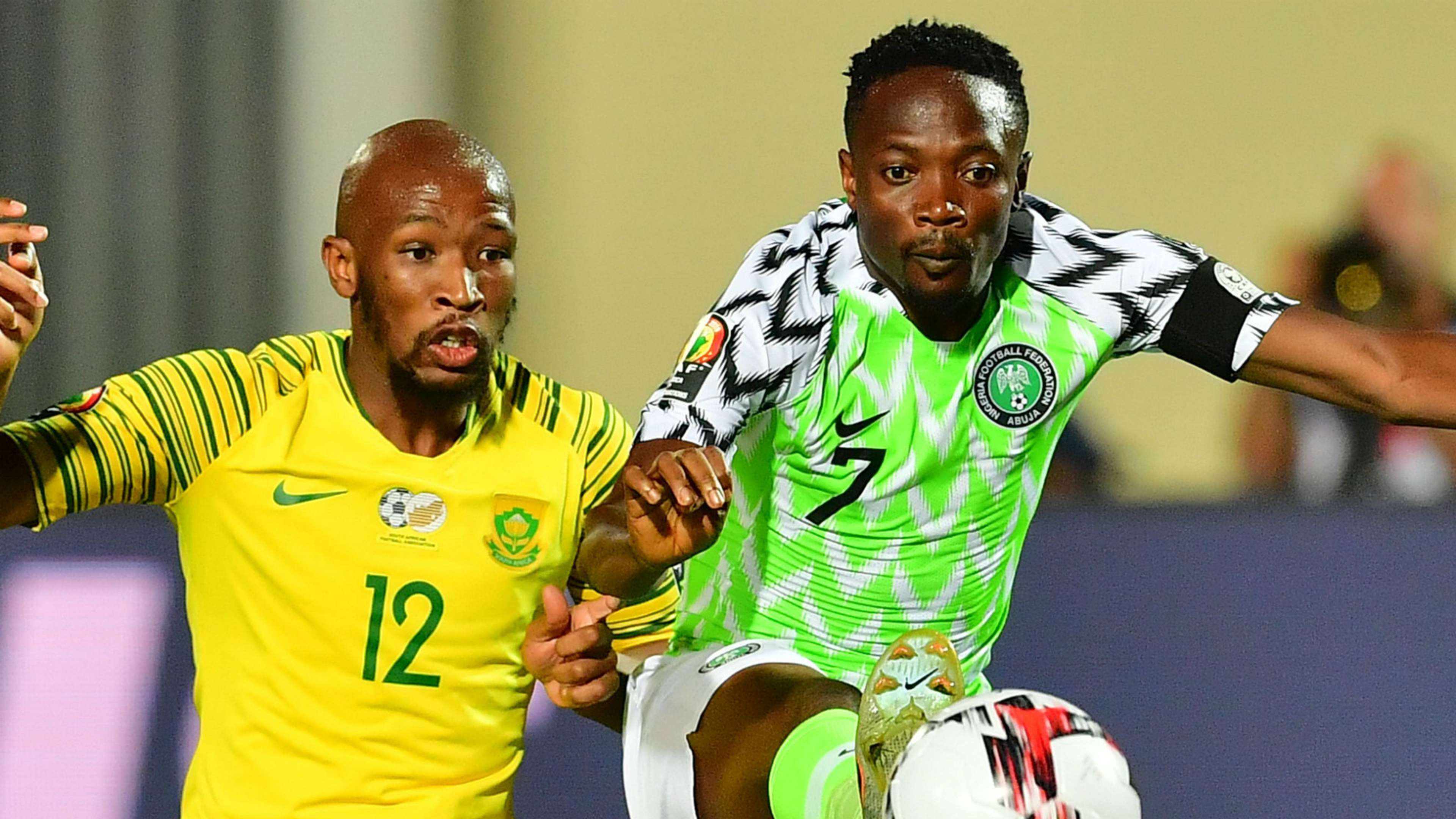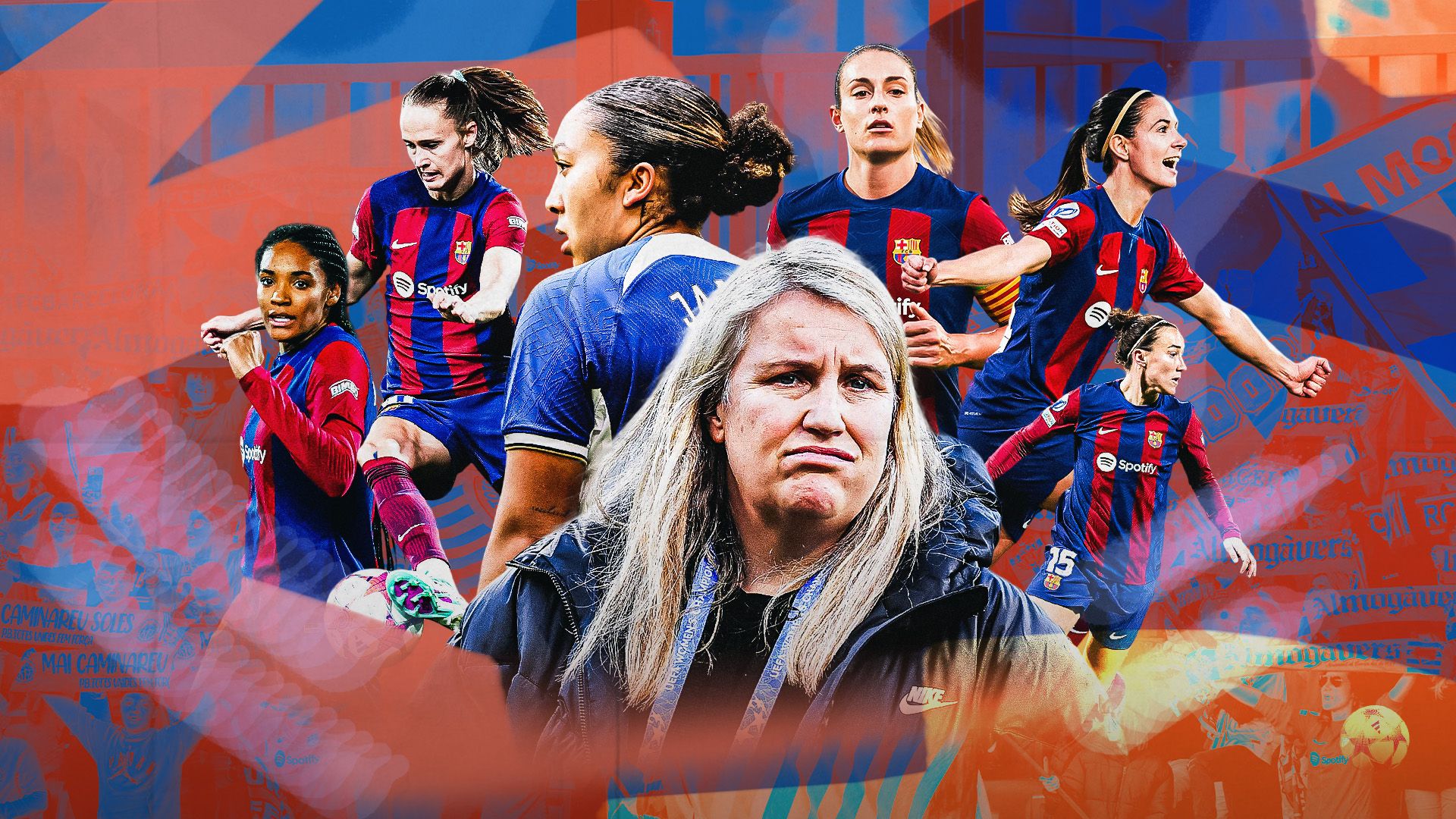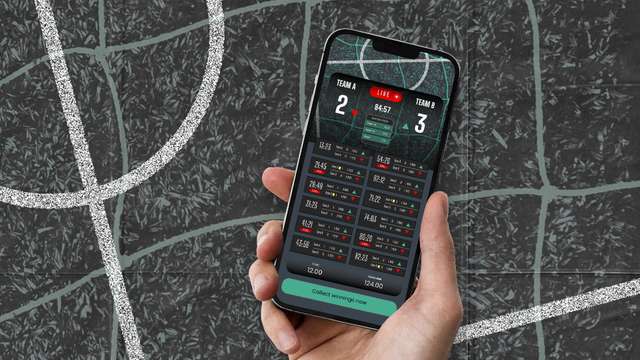Nigeria and South Africa clashed in the quarter-final at the Africa Cup of Nations (Afcon) on Wednesday evening in Cairo. A last minute winner sent the Super Eagles into the semi-finals having seen South Africa equalise with the help of VAR. Gernot Rohr’s men will meet the winner of the Cote d’Ivoire vs Algeria quarter final on Sunday evening with a place in the final at stake.
TEAM NEWS
Stuart Baxter named an unchanged team from the 1-0 win against Egypt despite Themba Zwane’s return from suspension. Thembinkosi Lorch kept his place on the flank, whilst Ronwen Williams continued in goal and it was again a three-man central midfield with Kamohelo Mokotjo alongside Dean Furman and Bongani Zungu.
Nigeria made two changes from the side which came from 2-1 down to beat Cameroon 3-2 in the Round of 16. At left back, Jamilu Collins made his first appearance of the tournament after illness, meaning Ola Aina dropped to the bench. On the right flank, Samuel Chukwueze got the nod ahead of Moses Simon after his lively substitute appearance against Cameroon.
BAFANA GIVEN THE BALL
From the start of the game, it was clear that Nigeria were not going to press high and try to close down the Bafana Bafana centre backs, but instead look to close down in midfield. Baxter’s team were being allowed long spells of possession in non-dangerous areas by Rohr’s men.
As Bafana looked to do in their opening match against Cote d’Ivoire, Dean Furman moved out to the right flank or right half-space when his side were trying to play out from the back. This was to escape Alex Iwobi in his zone, whilst freeing Thami Mkhize to play high up on the right flank, therefore pushing Percy Tau inside and closer to Lebo Mothiba. The problem was that even when Furman or Mokotjo got the ball, the latter dropping deep centrally, they lacked the passing range to find teammates further forward, switch the play or drive forward with the ball to draw out a man.
In midfield, Nigeria were very much man-oriented. All tournament long, they have had problems guarding the space in front of their defence due to Peter Etebo and Wilfred Ndidi being pulled away from that zone when closing down opposition central midfielders. It was the same in this game, but the duo were winning lots of challenges when pressing Zungu and Mokotjo. By full-time, the pair had made five tackles and six interceptions, dominating that area.
Bafana, meanwhile, were again trying to use Tau and Lorch as inside forwards, with both looking to play narrow. With Mothiba dropping off constantly to show for the ball, it was rarely dangerous for one of the central defenders to step out into that space to engage him, safe in the knowledge that there was little threat in-behind. This also allowed William Troost-Ekong and Kenneth Omeruo to defend higher up than usual, thereby compressing the space between-the-lines.
EAGLES ATTACK THE FLANKS
Despite having very little of the ball, by design, in the opening 25 minutes, Nigeria were very purposeful when they did get it. Nearly every regain was followed by a deliberate ploy to switch play into the wide areas. As Bafana were not using Lorch and Tau wide, the Super Eagles fullbacks were constantly free to overlap, whilst being a great out-ball on transition to bypass any counter pressing.
On the right flank, Chidozie Awaziem was much more progressive than usual (being a central defender naturally), so Etebo and Omeruo regularly hit long passes out to him, freeing Chukwueze to come inside onto his left foot to find space around Mokotjo. Iwobi was also causing real trouble by moving towards the flanks and creating overloads against South Africa’s fullbacks, who were already overloaded with a winger to face and either Collins or Awaziem arriving from deep.
The goal came from that source. Ndidi switched play to Ahmed Musa on the left touchline. Iwobi pulled wide to link with the winger as Zungu made a half-hearted attempt to track his man. Meanwhile, Chukwueze had come inside and Mokotjo had not spotted the danger, with Furman had been pulled across towards Iwobi. After a shot was blocked, it fell for Nigeria’s right winger to steer home. All game, Chukwueze had looked a threat and his excellent arrival into a scoring area brought the goal.
These problems in wide areas persisted for Bafana as Chukwueze isolated Hlanti, beat him on the outside and nearly forced a second goal. South Africa, as had been a problem throughout their Afcon campaign, also nearly conceded from their own freekick as Iwobi found Musa bursting free on the counter-attack, but Chukwueze blasted over the bar when he was picked out.
Bafana’s reaction had been non-existent. Williams was looking long from the back, whilst Mothiba was struggling in the duels with the Nigerian central defenders. Etebo characterised the half by reading a pass into Zungu and brushing him off the ball. The battle in the engine room was being completely dominated by Rohr’s team.
 Backpagepix
Backpagepix
SECOND HALF – NIGERIA DROP DEEPER
If Nigeria had not been bothered to dominate possession in the first half, that was even more the case in the second period. The backline dropped significantly deeper, perhaps to draw Bafana out for counters through the speedy wingers. This also had the effect of seeing possession numbers for Baxter’s side swell further.
By the 67th minute mark, Bafana had 61% of the ball in the game, yet had shown no penetration to their play. Themba Zwane had come on to try to provide more threat between-the-lines, but removing Lorch was a curious move and did not do anything to cause Nigeria new problems. Withdrawing one of the visibly fatigued Zungu or Mokotjo would have given Rohr something new to think about.
One moment summed up Bafana’s poor buildup at the tournament. Zungu pulled wide and took Ndidi with him, thus opening space for Tau to drop into. Mkhwanazi’s attempt to find his teammate was poor, Nigeria broke and Hlatshwayo had to crash through Ighalo to stop the attack. Etebo stepped up and forced Williams to tip the resultant freekick onto the bar. Even when South Africa’s best player found separation, no one in deeper areas had the ability to find him consistently.
MKHIZE VERSUS MUSA
One of the key battles in the second half was on the right flank. After Zwane had come on, he was playing very narrow, with Tau now also playing even further inside. The shape looked more like a midfield diamond and with even less width, the Bafana fullbacks were pushed into very advanced positions.
This left plenty of space for Nigeria to break, and Musa got past Mkhize to fire a cross which Furman had to clear, whilst Chukwueze beat Mkhwanazi in the channel and nearly picked out Ighalo. At the other end, Mkhize’s influence was growing as Musa was reluctant to track him.
With just over 70 minutes to go, South Africa were level. Having shown no route back into the game from open play, the equaliser arrived from a set-play. Tau’s delivery was flicked on by a Nigerian player, meaning Zungu was incorrectly flagged offside from his finish and VAR over-ruled the decision. Despite being level, Bafana were still not compact and gave Chukwueze a chance to beat Mokotjo on a counter and find Iwobi to lash over the bar.
Rohr decided after 82 minues to trade Musa’s pace on the break, but lack of defensive nous, for Moses Simon. The latter immediately did a better job of tracking Mkhize. He was also looking to replicate Musa’s direct running at the South Africa right back, twice taking him on but getting nowhere. On the third occasion, he drew a corner. The substitute delivered, Williams came out to punch – with his call audible on the television replays – but he missed the ball completely and Troost-Ekong bundled in the winner.
Stuart Baxter had used his usual Plan B shortly prior to the goal, bringing on target man, Lars Veldwijk for the ineffective Mothiba. This change, as usual, saw Bafana play direct. The substitute won one good header from a deep freekick, but without any genuine width, there were not crosses for him to attack. Nigeria looked very susceptible against deliveries from wide in their win against Cameroon, whilst Daniel Akpeyi has struggled aerially in this tournament. However, two possible weaknesses for the Super Eagles were never really exploited by Bafana.
There was still time for another Nigeria counter as the outstanding Chukwueze set up Ighalo for a chance, but Williams smothered. Rohr then put on Leon Balogun for Alex Iwobi for the final moments to give extra cover against Veldwijk. Baxter didn’t bother with using his third change.
SUMMARY
Although this game was settled by a goalkeeping error in the final moments, that does not tell the story of a far superior Nigeria side. Rohr’s men had significantly more chances despite having just 39% of the ball in the game. Their switching of play to their wide men allowed constant chances to isolate South Africa’s fullbacks. Whereas Hlanti had been given close support in facing Mohamed Salah against Egypt, he was constantly left alone against Chukwueze, whilst Musa and Iwobi also found space to exploit on the flanks.
In midfield, Nigeria dominated proceedings with both Ndidi and Etebo performing excellently, not only in closing down but with their long passing out to the flanks – Bafana’s trio lacked the physicality and freshness to compete. Whereas the aggressive closing down from the Super Eagles pairing had left the zone in front of the back four exposed against Cameroon, it was no real problem here as the backline defended much higher up in the first half than usual, due to the lack of depth to Bafana’s play as Mothiba spent most of the game showing for the ball with his back to goal.
Bafana’s performance was similar to that against Cote d’Ivoire and Namibia, in that they were allowed to play out from the back, had significantly more possession, but had no real ideas of what to do with it. There was no width to their play, there were no runners in-behind and there were no midfielders with the energy to run with the ball, arrive in the box, or play penetrative passes over the top. Baxter’s changes were typically uninspiring as he removed Lorch and then simply went long to Veldwijk. The equaliser had come from a dead-ball situation and aside from those scenarios and the space afforded to Bafana by Egypt’s reckless approach, this was a tournament of sterility for South Africa when trying to break down opponents.
Nigeria did well to solve their problems from the last game and in Chukwueze, Etebo and Ndidi, they had the three outstanding players on the pitch. With 38% and 39% possession respectively in their two knockout wins, Rohr has found a way to draw opponents out and make space for his attackers to exploit.




.jpg?auto=webp&format=pjpg&width=640&quality=60)
